Next baby steps towards addressing unconscious racism
Last week I found myself writing about the automatic denial and defensiveness I saw in myself when I was presented with an opportunity to work on discovering how racism might live in me. This response, I later discovered, is typical for a white person. Apparently, many of us who identify as white say – ‘but I’ve been friends with people of different races throughout my life’. I said this. We say – ‘but this isn’t something I’m part of’. I thought this. We feel uninvolved because we are privileged not to have to be impacted by it day to day. I felt this. And we feel bad when we begin to understand that racism does live in us and lies lodged deeply within us. I felt bad. I was being controlled by an assumption in my subliminal mind (what Rob Nairn names the Subliminal Reflex in the Level 3 Insight training) that said the following – if I admit to my thoughts and behaviour being racially conditioned, it would make me a bad person. (If you’d like to hear more about these responses that are widely shared among white people, you could check out Robin DiAngelo when she talks about understanding white privilege.
Thank goodness for my mindfulness training! Mindfulness reminds us that we are all subject to conditioning and we don’t need to take it personally. In fact, we can be kind about it, whatever it is. However unforgivable we might judge it to be. We can take a step back and let ourselves see the full mess of our conditioning, the trouble it’s got us and others into. And we can sit in the middle of it as a compassionate mess. From here change is possible, from denial and defensiveness, it is not.
And what is this conditioning? Where did it come from? How did it infiltrate so deeply and pervasively into the fabric of my being? One answer has come through reading My Grandmother’s Hands. In this book Rezmaa Menakem speaks of the body responses a white person may have course through them in response to information, reporting or events relating to racism. He speaks of what a black person may experience in contrast. These responses, he says, are lodged in our body memory and have been inherited through generations (scientists now know that such things can be passed down in our DNA). As a white person, it was telling to momentarily have a sense of the inner experience of a black person in this way. I hadn’t imagined or gone there before. And yet this reality has been sitting, living, walking beside me in friends’, neighbours’, colleagues’ bodies throughout my life. Whatever our background or skin colour, we are holding the legacy of centuries of racial violence in our bodies. The conditioning is somatised. We can talk about it, work through it, protest, change systems etc etc, but to get to the root of it, maybe we need to learn to meet and work with our bodies’ realities. We need to address the trauma in our bodies – all of us, to truly work through the roots of violence on the streets.
This week, witnessing what’s unfolding on the streets around the world, I have felt pain. I believe that though trauma may be living in our bodies and dictating our responses when we feel threatened, other, more connected and compassionate responses are possible. And they can be nurtured and cultivated to gain in strength through wise mindfulness and compassion practice. This week, I’ve felt responses like this erupting in my heart. I feel like I’m feeling on behalf of all humanity and the earth. Seeing images of police ramming crowds with their cars, trampling a woman beneath a horse’s feet, punching someone in the face, crashing a man’s head into a windscreen – tears of sorrow come, sorrow for the collective suffering of this. Then I see a video of fifty policemen and women kneeling in solidarity in a line in front of protestors and there are different tears. What is this feeling? It is the pain of it all married to a passionate hope for the triumph of the dignity and humility which lives as potential within each one of us.
One route towards the healing of racialised trauma feels like it would be to consciously feel the collective pain, both in my own compassion practice and in practice groups where we can rest in and communicate from the compassionate heart together. In this way we can feel our inextricable interconnectedness, we can identify as human above all, celebrating our difference and diversity. We can dare to long for a more just world where love conquers hatred and we all stand together. It feels vulnerable, even foolhardy, to permit this hope. But in my heart, I know that acting on this hope is what my life is for.
Join us in this important work. We will find ways to widen our circle of inclusion through mindfulness and compassion practice. By understanding and accepting our conditioning, recognising that is isn’t our fault but that we can take responsibility for it and respond, we can begin to go beyond ‘othering’ to live from a sense of We.
We will be offering a weekend in November (27-29th) and an evening CPD session online for mindfulness teachers on the 22nd June, both on Mindfulness-Based Inclusion Training with Dean and Aesha Francis.
Fay Adams


